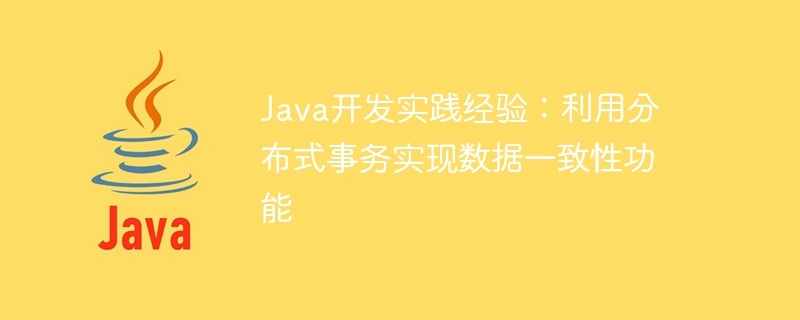Home >Java >javaTutorial >Practical experience in Java development: using distributed transactions to achieve data consistency functions
Practical experience in Java development: using distributed transactions to achieve data consistency functions
- PHPzOriginal
- 2023-11-20 10:15:44675browse

In the modern software development world, distributed applications are very common, especially in cloud computing and microservices architecture. However, there are some data consistency issues in a distributed environment. For example, an operation needs to span multiple data sources. If one of the data source operations fails, the other data sources must also be rolled back to ensure data consistency. Therefore, distributed applications need to use distributed transactions to ensure data consistency. This article will delve into the practical experience of distributed transactions in Java development.
- Overview of Distributed Transactions
In a Java distributed environment, an operation may involve multiple data sources, such as multiple databases, message queues, etc. However, each data source has its own transaction management mechanism. If an operation spans multiple data sources, it must be ensured that transactions from these data sources can be submitted or rolled back together, which requires distributed transactions.
The implementation of distributed transactions requires the use of two important concepts: transaction coordinator and participants. The transaction coordinator is responsible for coordinating the transaction operations of multiple participants to ensure that they can commit or rollback together. Participants are entities that handle specific transactions, such as a database. When the transaction coordinator requests a participant to perform a specific transaction, it initiates a distributed transaction on the participant to ensure data consistency.
- Case Analysis
Below we will use a simple case to demonstrate how to use Java to implement distributed transactions.
In this case, we will use Spring Boot Mybatis to build a distributed environment, which includes two MySQL databases (db1 and db2), which will store the same user information. We will use distributed transactions to ensure that the data for each operation is consistent. Here are the detailed steps of the entire process:
Step 1: Create a Spring Boot application.
In this application, we need to configure Mybatis and JTA transaction manager. Here we choose Atomikos as our JTA provider. Because Atomikos is lightweight, easy to configure, and easy to integrate with Spring.
Step 2: Create two MySQL databases.
We will simulate a distributed environment, so we need at least two databases. Each database must contain the same user data tables. Here we will create two databases named db1 and db2.
Step 3: Configure Mybatis data source.
We need to configure Mybatis in the Spring Boot application so that it can connect to our MySQL database. We need to configure two data sources, corresponding to the db1 and db2 databases. In order for Mybatis to support JTA transactions, we need to use Mybatis's spring-boot-starter-jta-atomikos dependency.
Step 4: Implement UserService.
UserService is the core part of our business logic. It will load user data from two MySQL databases and insert or update user data. This is a distributed application built on two MySQL databases. In this case, it makes sense to take a deeper look at how Spring Boot Mybatis User Service accomplishes this task.
Step 5: Configure the distributed transaction manager.
Every operation requires the use of distributed transactions, so we need to configure a distributed transaction manager. We choose Atomikos as our JTA provider here. Atomikos is a very lightweight JTA implementation that is easy to configure and integrate with Spring.
Step 6: Test whether UserService can work normally.
After completing the above steps, we need to write some test cases to ensure that UserService can work properly. These test cases will simulate a distributed environment where UserService will try to load, insert or update user data from two different MySQL databases.
Through the practice of the above steps, we can clearly see how to use the distributed transaction mechanism to achieve data consistency in Java development. Only by mastering this technology can we avoid data inconsistency problems in distributed applications. Therefore, when developing distributed applications, always pay attention to data consistency issues and use an appropriate distributed transaction manager to protect data consistency.
The above is the detailed content of Practical experience in Java development: using distributed transactions to achieve data consistency functions. For more information, please follow other related articles on the PHP Chinese website!

